
SQUAD Documentation
Release 1.89
Linaro
Jul 25, 2024

CONTENTS:
1 Introduction: data model and usage 1
1.1 Core data model . . . . . . . . . . . . . . . . . . . . . . . . . . . . . . . . . . . . . . . . . . . . . 1
1.2 Submitting results . . . . . . . . . . . . . . . . . . . . . . . . . . . . . . . . . . . . . . . . . . . . 2
1.3 Input file formats . . . . . . . . . . . . . . . . . . . . . . . . . . . . . . . . . . . . . . . . . . . . . 3
1.3.1 Test results . . . . . . . . . . . . . . . . . . . . . . . . . . . . . . . . . . . . . . . . . . . 3
1.3.2 Metrics . . . . . . . . . . . . . . . . . . . . . . . . . . . . . . . . . . . . . . . . . . . . . 4
1.3.3 Metadata . . . . . . . . . . . . . . . . . . . . . . . . . . . . . . . . . . . . . . . . . . . . 4
1.4 CI loop integration (optional) . . . . . . . . . . . . . . . . . . . . . . . . . . . . . . . . . . . . . . 5
1.4.1 Default auth group 'squad' . . . . . . . . . . . . . . . . . . . . . . . . . . . . . . . . . . . 5
2 Quick start: Running SQUAD locally 7
3 Development-related notes and tips 9
3.1 Running a development environment under Docker . . . . . . . . . . . . . . . . . . . . . . . . . . . 9
3.2 Checklist for loading a copy of a production database . . . . . . . . . . . . . . . . . . . . . . . . . . 9
3.3 Running Javascript unit tests . . . . . . . . . . . . . . . . . . . . . . . . . . . . . . . . . . . . . . . 10
3.4 Log monitoring . . . . . . . . . . . . . . . . . . . . . . . . . . . . . . . . . . . . . . . . . . . . . . 10
4 Translating the SQUAD user interface 11
5 Plugins: usage and development 13
5.1 Enabling plugins . . . . . . . . . . . . . . . . . . . . . . . . . . . . . . . . . . . . . . . . . . . . . 13
5.2 Declaring plugins in your Python package . . . . . . . . . . . . . . . . . . . . . . . . . . . . . . . . 13
5.3 The plugin API . . . . . . . . . . . . . . . . . . . . . . . . . . . . . . . . . . . . . . . . . . . . . . 14
5.4 Adding plugin usage to the SQUAD core . . . . . . . . . . . . . . . . . . . . . . . . . . . . . . . . 14
5.5 Full plugin package example . . . . . . . . . . . . . . . . . . . . . . . . . . . . . . . . . . . . . . . 15
5.6 Built-in notification plugins . . . . . . . . . . . . . . . . . . . . . . . . . . . . . . . . . . . . . . . 16
5.6.1 Github . . . . . . . . . . . . . . . . . . . . . . . . . . . . . . . . . . . . . . . . . . . . . . 16
5.6.2 Gerrit . . . . . . . . . . . . . . . . . . . . . . . . . . . . . . . . . . . . . . . . . . . . . . 16
6 Installation Instructions for production environments 19
6.1 Installation using the Python package manager pip . . . . . . . . . . . . . . . . . . . . . . . . . . . 19
6.2 Message broker . . . . . . . . . . . . . . . . . . . . . . . . . . . . . . . . . . . . . . . . . . . . . . 19
6.3 Processes . . . . . . . . . . . . . . . . . . . . . . . . . . . . . . . . . . . . . . . . . . . . . . . . . 20
6.4 Worker configuration . . . . . . . . . . . . . . . . . . . . . . . . . . . . . . . . . . . . . . . . . . . 21
6.5 Further configuration . . . . . . . . . . . . . . . . . . . . . . . . . . . . . . . . . . . . . . . . . . . 21
6.6 User management . . . . . . . . . . . . . . . . . . . . . . . . . . . . . . . . . . . . . . . . . . . . 22
6.7 Docker compose setup . . . . . . . . . . . . . . . . . . . . . . . . . . . . . . . . . . . . . . . . . . 23
6.7.1 Database dump and restore . . . . . . . . . . . . . . . . . . . . . . . . . . . . . . . . . . . 24
7 CI: continous integration support 25
i

7.1 CI module in SQUAD . . . . . . . . . . . . . . . . . . . . . . . . . . . . . . . . . . . . . . . . . . 25
7.2 Submitting test job requests . . . . . . . . . . . . . . . . . . . . . . . . . . . . . . . . . . . . . . . 25
7.3 Submitting test job watch requests . . . . . . . . . . . . . . . . . . . . . . . . . . . . . . . . . . . . 26
7.4 Backend settings . . . . . . . . . . . . . . . . . . . . . . . . . . . . . . . . . . . . . . . . . . . . . 27
7.5 Supported backends . . . . . . . . . . . . . . . . . . . . . . . . . . . . . . . . . . . . . . . . . . . 27
7.5.1 LAVA . . . . . . . . . . . . . . . . . . . . . . . . . . . . . . . . . . . . . . . . . . . . . . 27
7.5.2 TuxSuite . . . . . . . . . . . . . . . . . . . . . . . . . . . . . . . . . . . . . . . . . . . . . 28
7.6 Callbacks Triggers . . . . . . . . . . . . . . . . . . . . . . . . . . . . . . . . . . . . . . . . . . . . 28
7.6.1 Authentication . . . . . . . . . . . . . . . . . . . . . . . . . . . . . . . . . . . . . . . . . 29
7.6.2 Notes . . . . . . . . . . . . . . . . . . . . . . . . . . . . . . . . . . . . . . . . . . . . . . 29
7.7 Receiving Callbacks . . . . . . . . . . . . . . . . . . . . . . . . . . . . . . . . . . . . . . . . . . . 29
7.7.1 Use case: Tuxsuite . . . . . . . . . . . . . . . . . . . . . . . . . . . . . . . . . . . . . . . 30
8 API: Interacting with backend 31
8.1 Available APIs . . . . . . . . . . . . . . . . . . . . . . . . . . . . . . . . . . . . . . . . . . . . . . 31
8.2 Native APIs . . . . . . . . . . . . . . . . . . . . . . . . . . . . . . . . . . . . . . . . . . . . . . . . 31
8.2.1 data . . . . . . . . . . . . . . . . . . . . . . . . . . . . . . . . . . . . . . . . . . . . . . . 31
8.2.2 createbuild . . . . . . . . . . . . . . . . . . . . . . . . . . . . . . . . . . . . . . . . . . . 32
8.2.3 submit . . . . . . . . . . . . . . . . . . . . . . . . . . . . . . . . . . . . . . . . . . . . . . 33
8.2.4 submitjob . . . . . . . . . . . . . . . . . . . . . . . . . . . . . . . . . . . . . . . . . . . . 33
8.2.5 watchjob . . . . . . . . . . . . . . . . . . . . . . . . . . . . . . . . . . . . . . . . . . . . . 33
8.2.6 resubmit . . . . . . . . . . . . . . . . . . . . . . . . . . . . . . . . . . . . . . . . . . . . . 33
8.2.7 forceresubmit . . . . . . . . . . . . . . . . . . . . . . . . . . . . . . . . . . . . . . . . . . 33
8.3 REST APIs . . . . . . . . . . . . . . . . . . . . . . . . . . . . . . . . . . . . . . . . . . . . . . . . 33
8.3.1 groups (/api/groups/) . . . . . . . . . . . . . . . . . . . . . . . . . . . . . . . . . . . . . . 34
8.3.2 projects (/api/projects/) . . . . . . . . . . . . . . . . . . . . . . . . . . . . . . . . . . . . . 34
8.3.3 builds (/api/builds/) . . . . . . . . . . . . . . . . . . . . . . . . . . . . . . . . . . . . . . . 34
8.3.4 testjobs (/api/testjobs/) . . . . . . . . . . . . . . . . . . . . . . . . . . . . . . . . . . . . . 36
8.3.5 testruns (/api/testruns/) . . . . . . . . . . . . . . . . . . . . . . . . . . . . . . . . . . . . . 36
8.3.6 tests (/api/tests/) . . . . . . . . . . . . . . . . . . . . . . . . . . . . . . . . . . . . . . . . . 36
8.3.7 metrics (/api/metrics/) . . . . . . . . . . . . . . . . . . . . . . . . . . . . . . . . . . . . . 36
8.3.8 suites (/api/suites/) . . . . . . . . . . . . . . . . . . . . . . . . . . . . . . . . . . . . . . . 37
8.3.9 environments (/api/environments/) . . . . . . . . . . . . . . . . . . . . . . . . . . . . . . . 37
8.3.10 backends (/api/backends/) . . . . . . . . . . . . . . . . . . . . . . . . . . . . . . . . . . . . 37
8.3.11 emailtemplates (/api/emailtemplates/) . . . . . . . . . . . . . . . . . . . . . . . . . . . . . 37
8.3.12 knownissues (/api/knownissues/) . . . . . . . . . . . . . . . . . . . . . . . . . . . . . . . . 37
8.3.13 patchsources (/api/patchsources/) . . . . . . . . . . . . . . . . . . . . . . . . . . . . . . . . 37
8.3.14 annotations (/api/annotations/) . . . . . . . . . . . . . . . . . . . . . . . . . . . . . . . . . 37
8.3.15 metricthresholds (/api/metricthresholds/) . . . . . . . . . . . . . . . . . . . . . . . . . . . . 38
8.3.16 reports (/api/reports/) . . . . . . . . . . . . . . . . . . . . . . . . . . . . . . . . . . . . . . 38
8.4 REST API Schema (for CLI) . . . . . . . . . . . . . . . . . . . . . . . . . . . . . . . . . . . . . . . 38
8.5 SQUAD-Client . . . . . . . . . . . . . . . . . . . . . . . . . . . . . . . . . . . . . . . . . . . . . . 38
8.6 Badges . . . . . . . . . . . . . . . . . . . . . . . . . . . . . . . . . . . . . . . . . . . . . . . . . . 38
8.7 Google Data Studio . . . . . . . . . . . . . . . . . . . . . . . . . . . . . . . . . . . . . . . . . . . 39
9 Use case: setup SQUAD with LAVA 41
9.1 Introduction . . . . . . . . . . . . . . . . . . . . . . . . . . . . . . . . . . . . . . . . . . . . . . . 41
9.2 Setting up a LAVA instance . . . . . . . . . . . . . . . . . . . . . . . . . . . . . . . . . . . . . . . 41
9.3 Creating a Backend for a LAVA instance . . . . . . . . . . . . . . . . . . . . . . . . . . . . . . . . 41
9.4 Creating a Project in SQUAD . . . . . . . . . . . . . . . . . . . . . . . . . . . . . . . . . . . . . . 42
9.5 Submitting and fetching test jobs . . . . . . . . . . . . . . . . . . . . . . . . . . . . . . . . . . . . 42
9.6 Extra use cases . . . . . . . . . . . . . . . . . . . . . . . . . . . . . . . . . . . . . . . . . . . . . . 42
10 Indices and tables 43
ii

iv

CHAPTER
ONE
INTRODUCTION: DATA MODEL AND USAGE
1.1 Core data model
+----+ * +-------+ * +-----+ * +-------+ * +----+ * 1 +-----+
|Team|--->|Project|--->|Build|--->|TestRun|--->|Test|------>|Suite|
+----+ +---+---+ +-----+ +-------+ +----+ +-----+
^ * ^ | * | ^ 1
| | | | * +------+ * |
+---+--------+ | | +--->|Metric|--------+
|Subscription| | | +------+
+------------+ | v 1
+-------------+ | +-----------+
|ProjectStatus|-+ |Environment|
+-------------+ +-----------+
SQUAD is multi-group and multi-project. Each group can have multiple projects. For each project, you can have
multiple builds, and for each build, multiple test runs. Each test run can include multiple test results, which can be either
pass/fail results, or metrics, containing one or more measurement values. Test and metric results can belong to a Suite,
which is a basically used to group and analyze results together. Every test suite must be associated with exactly one
Environment, which describes the environment in which the tests were executed, such as hardware platform, hardware
configuration, OS, build settings (e.g. regular compilers vcs optimized compilers), etc. Results are always organized
by environments, so we can compare apples to apples.
Projects can have subscriptions, which are either users or manually-entered email addreses that should be notified about
important events such as changing test results. ProjectStatus records the most recent build of a project, against which
future results should be compared in search for important events to notify subscribers about. SQUAD also supports a
metric threshold system, which will send notification to project subscribers if the test result metrics exceed a certain
value. The threshold values will also appear in the charts. Projects have the project_settings field for any specific
configuration it might require.
Builds can be compared against baselines exposing regressions and fixes. Visit /_/comparebuilds/, select a project
then two builds from it. This comparison will go over each build's tests and find all different states from each. For
instance if a test failed in baseline but passes in a more current one, this is considered to be a "fix". The opposite is
called "regression". The concept can vary for other transitions.
1

SQUAD Documentation, Release 1.89
1.2 Submitting results
The API is the following
POST /api/submit/:group/:project/:build/:environment
• :group is the group identifier. It must exist previously.
• :project is the project identifier. It must exist previously.
• :build is the build identifier. It can be a git commit hash, a Android manifest hash, or anything really. Extra
information on the build can be submitted as an attachment. If a build timestamp is not informed there, the time
of submission is assumed.
• :environment is the environmenr identitifer. It will be created automatically if does not exist before.
All of the above identifiers (:group, :project, :build, and :environment) must match the regular expression
[a-zA-Z0-9][a-zA-Z0-9_.-]*.
The test data files must be submitted as either file attachments, or as regular POST parameters. . The following files are
supported:
• tests: test results data
• metrics: metrics data
• metadata: metadata about the test run
• attachment: arbitrary file attachments. Multiple attachments can be submitted by providing this parameter
multiple times.
See Input file formats below for details on the format of the data files.
Example with test data as file uploads:
$ curl \
--header "Authorization: token $SQUAD_TOKEN" \
--form tests=@/path/to/test-results.json \
--form metrics=@/path/to/metrics.json \
--form metadata=@/path/to/metadata.json \
--form log=@/path/to/log.txt \
--form attachment=@/path/to/screenshot.png \
--form attachment=@/path/to/extra-info.txt \
https://squad.example.com/api/submit/my-group/my-project/x.y.z/my-ci-env
Example with test data as regular POST parameters:
$ curl \
--header "Authorization: token $SQUAD_TOKEN" \
--form tests='{"test1": "pass", "test2": "fail"}' \
--form metrics='{"metric1": 21, "metric2": 4}' \
--form metadata='{"foo": "bar", "baz": "qux", "job_id": 123}' \
--form log='log text ...' \
--form attachment=@/path/to/screenshot.png \
--form attachment=@/path/to/extra-info.txt \
https://squad.example.com/api/submit/my-group/my-project/x.y.z/my-ci-env
Example with test data using Python's requests library:
2 Chapter 1. Introduction: data model and usage

SQUAD Documentation, Release 1.89
import json
import requests
import os
tests = json.dumps({"test1": "pass", "test2": "fail"})
metrics = json.dumps({"metric1": 21, "metric2": 4})
metadata = json.dumps({"foo": "bar", "baz": "qux", "job_id": 123})
log = 'log text ...'
headers = {"Authorization": f"token {os.getenv('SQUAD_TOKEN')}"}
url = 'https://squad.example.com/api/submit/my-group/my-project/x.y.z/my-ci-env'
data = {"metadata": metadata, "log": log, "tests": tests_file}
result = requests.post(url, headers=headers, data=data)
if not result.ok:
print(f"Error submitting to qa-reports: {result.reason}: {result.text}")
Since test results should always come from automation systems, the API is the only way to submit results into the
system. Even manual testing should be automated with a driver program that asks for user input, and them at the end
prepares all the data in a consistent way, and submits it to dashboard.
If input data is valid and nothing goes wrong with the request, SQUAD will return 201 as status code and the test run
id in the response body.
1.3 Input file formats
1.3.1 Test results
Test results must be posted as JSON, encoded in UTF-8. The JSON data must be a hash (an object, strictly speaking).
Test names go in the keys, and values must be either "pass" or "fail". Case does not matter, so "PASS"/"FAIL"
will work just fine. Any value that when downcased is not either "pass" or "fail" will be mapped to None/NULL and
displayed in the UI as skip.
Tests that have "fail" as results and are known to have any issues are displayed as xfail (eXpected-fail).
Tests can be grouped in test suites. For that, the test name must be prefixed with the suite name and a slash (/).
Therefore, slashes are reserved characters in this context, and cannot be used in test names. There is one exception to
this rule. If test name contains square brackets ([, ]) they are considered as test variant. The string inside brackets
can contain slashes. Suite names can have embedded slashes in them; so "foo/bar" means suite "foo", test "bar"; and
"foo/bar/baz" means suite "foo/bar", test "baz".
Example:
{
"test1": "pass",
"test2": "pass",
"testsuite1/test1": "pass",
"testsuite1/test2": "fail",
"testsuite2/subgroup1/testA": "pass",
"testsuite2/subgroup2/testA": "pass",
"testsuite2/subgroup2/testA[variant/one]": "pass",
"testsuite2/subgroup2/testA[variant/two]": "pass"
}
1.3. Input file formats 3
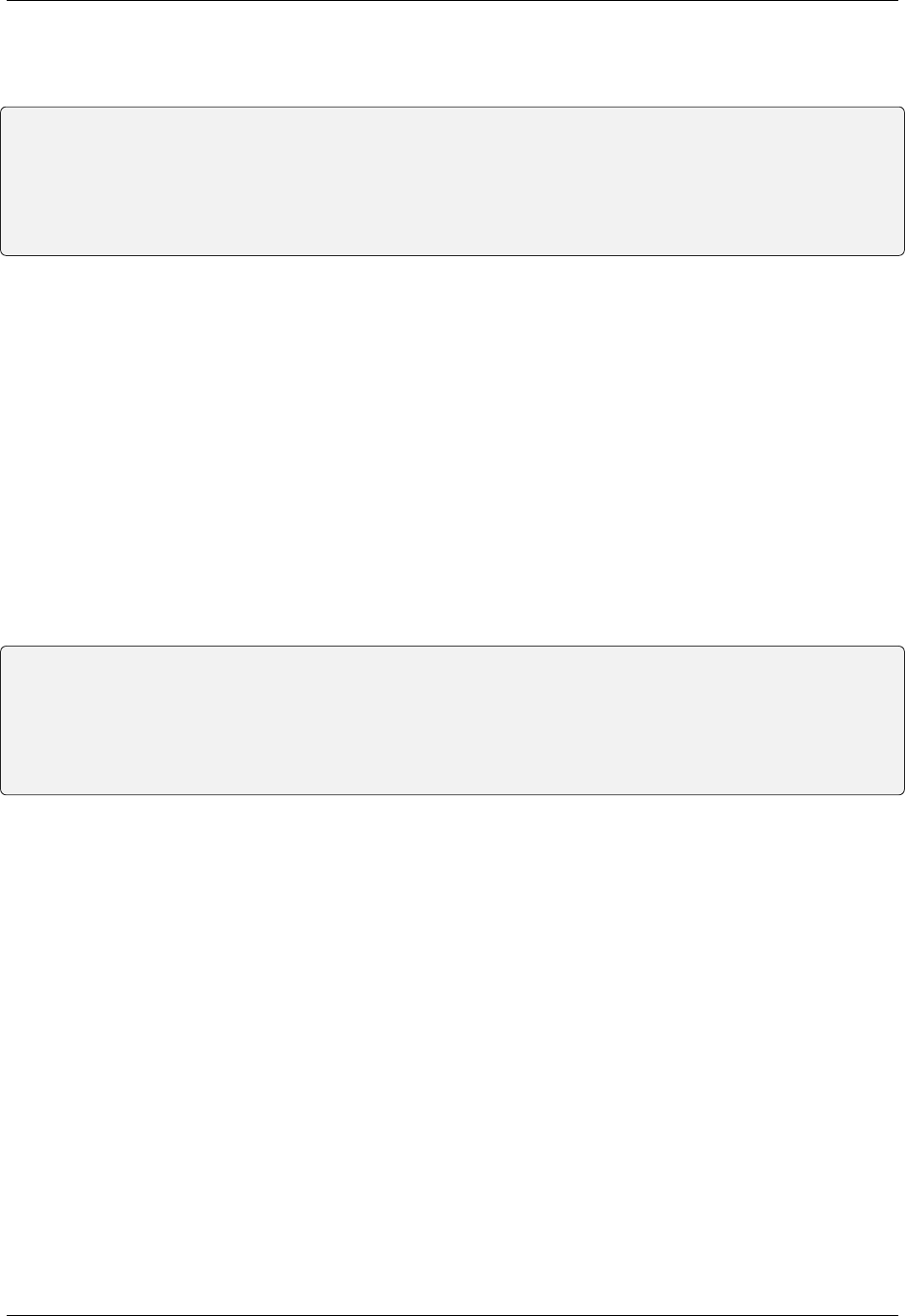
SQUAD Documentation, Release 1.89
There is an alternative format for sending results. Since SQUAD supports storing test log in the Test object, passed
JSON file can look as follows:
{
"test1": {"result": "pass", "log": "test 1 log"},
"test2": {"result": "pass", "log": "test 2 log"},
"testsuite1/test1": {"result": "pass", "log": "test 1 log"},
"testsuite1/test2": {"result": "fail", "log": "test 2 log"}
}
Both forms are supported. In case log entry is missing or simple JSON format is used, logs for each Test object are
empty. They can be filled in using plugins.
1.3.2 Metrics
Metrics must be posted as JSON, encoded in UTF-8. The JSON data must be a hash (an object, strictly speaking).
Metric names go in the keys, and values must be either a single number, or an array of numbers. In the case of an array
of numbers, then their mean will be used as the metric result; the whole set of results will be used where applicable,
e.g. to display ranges.
As with test results, metrics can be grouped in suites. For that, the test name must be prefixed with the suite name and a
slash (/). Therefore, slashes are reserved characters in this context, and cannot be used in test names. Suite names can
have embedded slashes in them; so "foo/bar" means suite "foo", metric "bar"; and "foo/bar/baz" means suite "foo/bar",
metric "baz".
Example:
{
"v1": 1,
"v2": 2.5,
"group1/v1": [1.2, 2.1, 3.03],
"group1/subgroup/v1": [1, 2, 3, 2, 3, 1]
}
1.3.3 Metadata
Metadata about the test run must be posted in JSON, encoded in UTF-8. The JSON data must be a hash (an object).
Keys and values must be strings. The following fields are recognized:
• build_url: URL pointing to the origin of the build used in the test run
• datetime: timestamp of the test run, as a ISO-8601 date representation, with seconds. This is the representation
that date --iso-8601=seconds gives you.
• job_id: identifier for the test run. Must be unique for the project. This field is mandatory
• job_status: string identifying the status of the project. SQUAD makes no judgement about its value.
• job_url: URL pointing to the original test run.
• resubmit_url: URL that can be used to resubmit the test run.
• suite_versions: a dictionary with version number strings for suite names used in the tests and metrics data.
For example, if you have test suites called "foo" and "bar", their versions can be expressed having metadata that
looks like this:
4 Chapter 1. Introduction: data model and usage

SQUAD Documentation, Release 1.89
{
# ...
"suite_versions": {
"foo": "1.0",
"bar": "3.1"
}
}
If a metadata JSON file is not submitted, the above fields can be submitted as POST parameters. If a metadata JSON
file is submitted, no POST parameters will be considered to be used as metadata.
When sending a proper metadata JSON file, other fields may also be submitted. They will be stored, but will not be
handled in any specific way.
1.4 CI loop integration (optional)
SQUAD can integrate with existing automation systems to participate in a Continuous Integration (CI) loop through
its CI subsystem. For more details check CI module in SQUAD.
1.4.1 Default auth group 'squad'
SQUAD creates by default an auth group with most of the permissions required for authenticated/registered users to
view, add, change and delete objects in the projects they have access to. The name of the group is 'squad' by default.
All newly created users therefrom are automatically added to this group to eleviate the need for manual intervention to
add a user each time one is created.
1.4. CI loop integration (optional) 5

SQUAD Documentation, Release 1.89
6 Chapter 1. Introduction: data model and usage
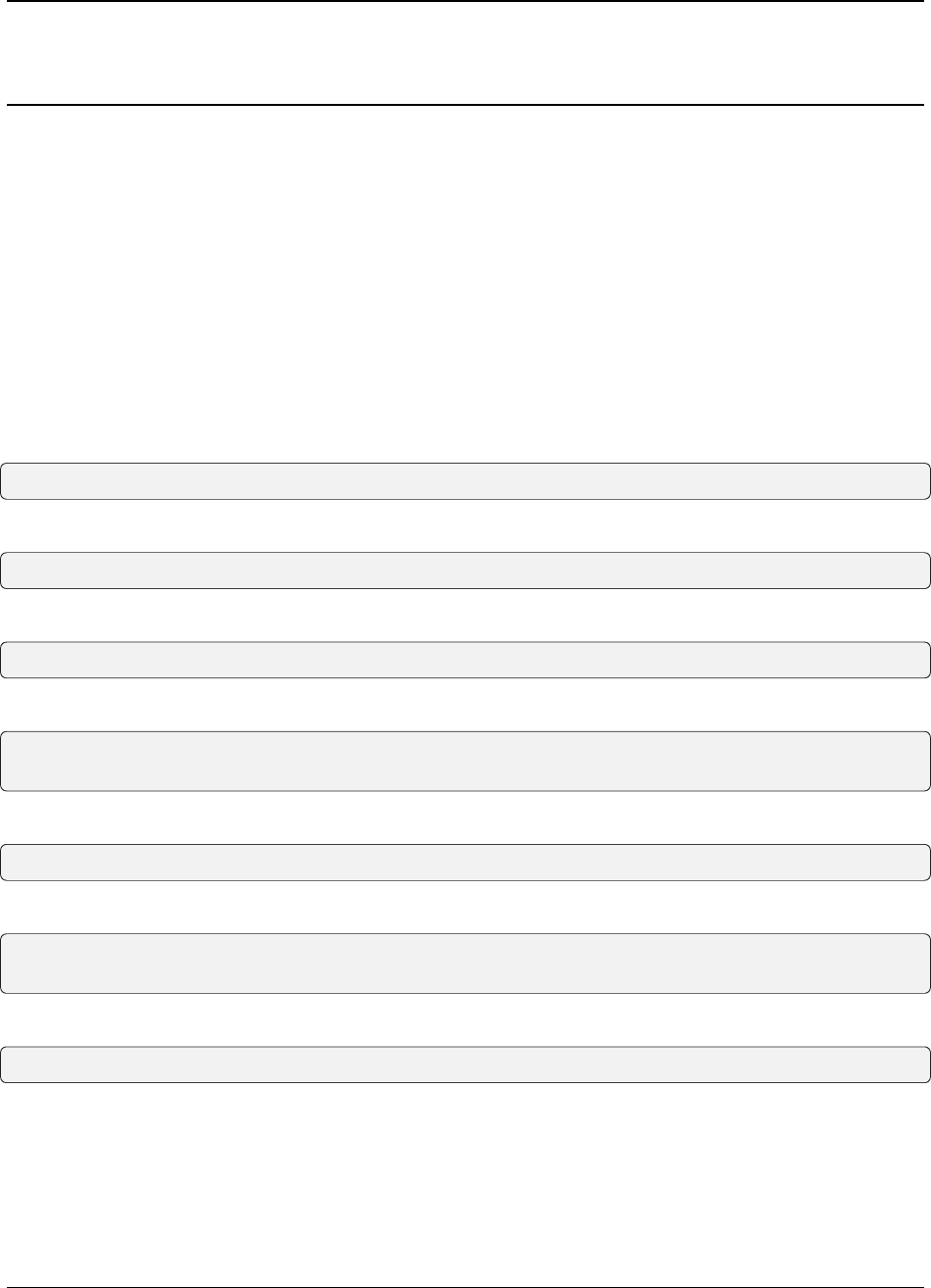
CHAPTER
TWO
QUICK START: RUNNING SQUAD LOCALLY
SQUAD is a Django application and works just like any other Django application. If you are new to Django and want to
setup a development environment, you can follow the instructions below. If you want to install SQUAD for production
usage, see Installation Instructions for production environments instead.
Note that SQUAD is Python3-only, so it won't work with Python 2.
Before moving on, there's a system dependency needed for Python to load yaml content with the C library, install it
with:
apt-get install libyaml-dev
On top of that, the following development packages may be required. Please make sure they're installed by issuing:
apt-get install libpq-dev python3-dev build-essential
To install the dependencies:
pip3 install -r requirements-dev.txt
Alternatively to using pip, on Debian stretch or later you can install dependencies from the repository:
apt-get install python3-dateutil python3-django python3-celery \
python3-django-celery python3-jinja2 python3-whitenoise python3-zmq
To run the tests:
./manage.py test
Before running the application, create the database and an admin user for yourself:
./manage.py migrate
./manage.py createsuperuser
To run the application locally:
./manage.py runserver
7

SQUAD Documentation, Release 1.89
8 Chapter 2. Quick start: Running SQUAD locally
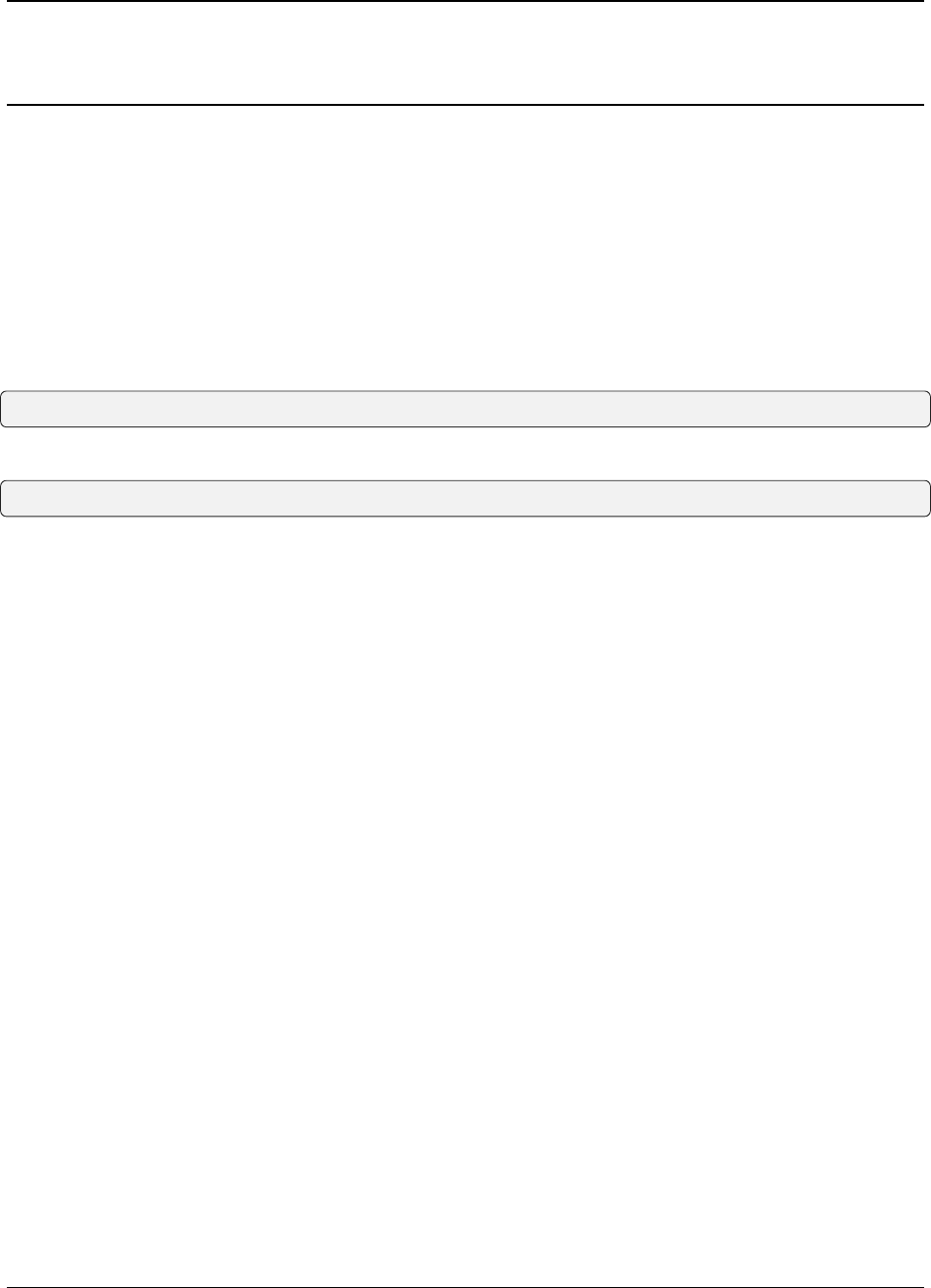
CHAPTER
THREE
DEVELOPMENT-RELATED NOTES AND TIPS
3.1 Running a development environment under Docker
To run tests, migrate database, and start the web server:
./dev-docker
To open a shell in the development environment:
./dev-docker bash
NOTE if you're running a firewall on your system, like ufw, make sure to allow the docker interface to interact with
your system's. If you're running ufw, do so with sudo ufw allow in on docker0.
3.2 Checklist for loading a copy of a production database
This procedure assumes you are using PostgreSQL in production, and will use PostgreSQL locally. If you are using
sqlite, then the procedure is trivial (just copy the database file).
on the server:
• dump the database: pg_dump -F custom -f /tmp/dump squad
locally:
• create empty DB: createdb squad
• copy dump: scp SERVER:/tmp/dump /tmp/
• load dump: pg_restore -d squad -j4 /tmp/dump
• migrate database: ./manage.py migrate
• create superuser: ./manage.py createsuperuser
• anonymize data: ./manage.py prepdump # avoid mailing users
9
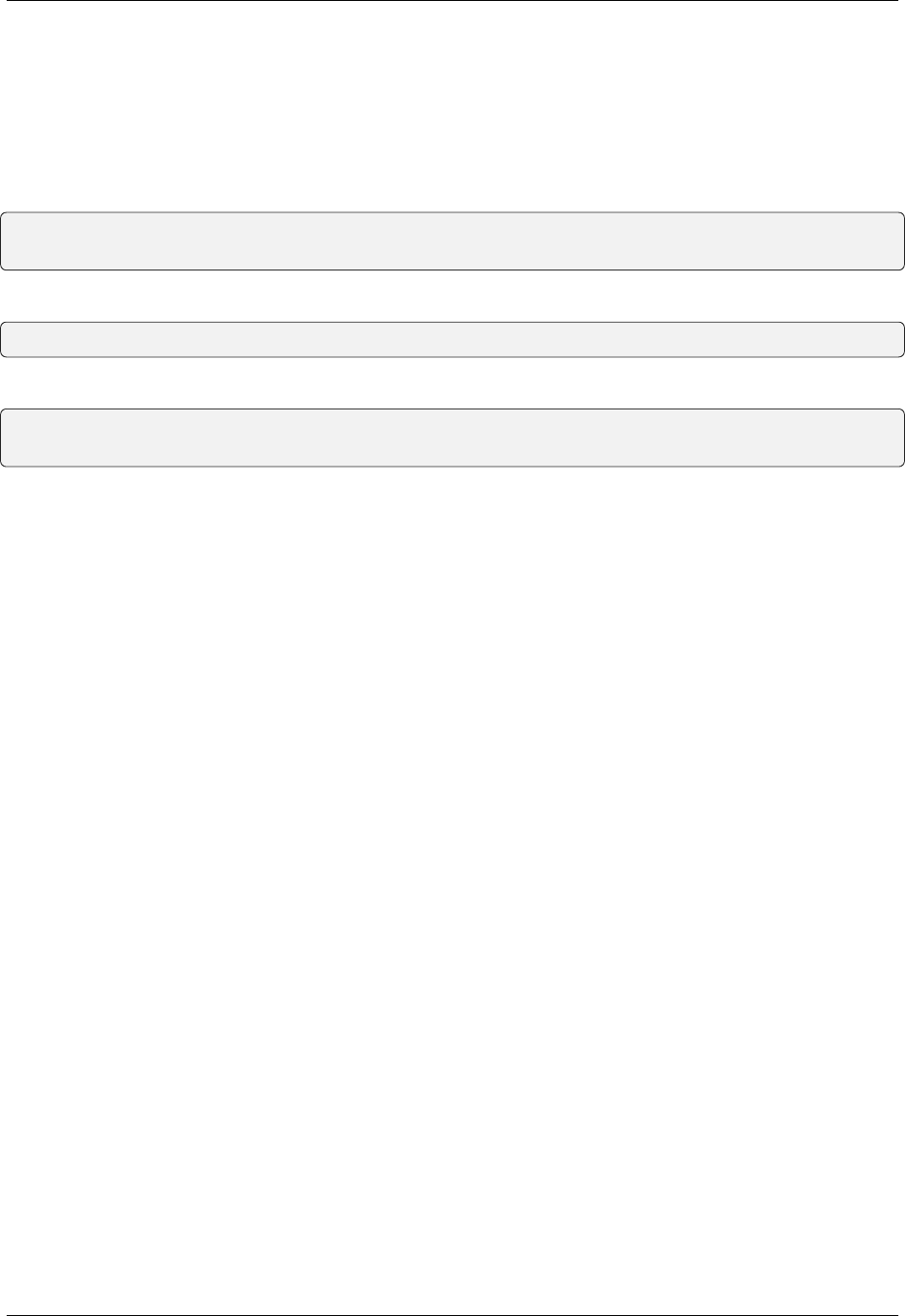
SQUAD Documentation, Release 1.89
3.3 Running Javascript unit tests
In order to run Javascript unit tests, you need to installl nodejs and npm package manager, then install the dependencies
from the package-lock.json file. Depending on the distribution, you can either install npm directly from repositories or
alternatevely add PPA and then install it. Here's the instructions of how to setup up after the npm package manager is
installed:
sudo apt-get install chromium
npm install
Simply running the Django tests will also run the Javascript unit tests:
./manage test
Or, you can run only the Javascript unit tests with one of these commands:
python3 python3 test/javascript.py # or
python3 -m test.javascript
3.4 Log monitoring
SQUAD uses Python's logging library to log events during its execution, it's important to keep track of those and
sometimes it's nice to have an extra tool to give admins a heads up that things aren't working correctly for example
when an ERROR log comes up.
In such scenario, SQUAD will try to send emails with the log content to admins registered in SQUAD_ADMINS envi-
ronment variable.
SQUAD also support log monitoring and aggregation with Sentry, a tool that collects similar error logs and manage
them nicer than just regular text emails. To enable Sentry support two steps are needed:
• set SENTRY_DSN environment variable with a dsn retrieved after creating a project in sentry.
• install Sentry's Python SDK: pip install sentry-sdk
10 Chapter 3. Development-related notes and tips

CHAPTER
FOUR
TRANSLATING THE SQUAD USER INTERFACE
The SQUAD translations are kindly hosted by Weblate.
The translations are split into different components, which match the separate modules in the squad codebase. As of
this writing, we have the components core and frontend. When you are reading this, we could have others.
In order to work with SQUAD translations, you need to create a weblate account.
To translate SQUAD into your language, just go to the project page on weblate, click on the component you want, and
then click on your language.
If your language does not exist yet for that component, just click "Start new translation".
Translation updates made on weblate are sent back to the SQUAD source code repository once a day.
11

SQUAD Documentation, Release 1.89
12 Chapter 4. Translating the SQUAD user interface

CHAPTER
FIVE
PLUGINS: USAGE AND DEVELOPMENT
5.1 Enabling plugins
Every available plugin needs to be enabled for each project in which it should be used. For that, access the Adminis-
tration interface, edit the project, and add the wanted plugin names to the "Enabled plugin list" field.
5.2 Declaring plugins in your Python package
SQUAD plugins are Python classes that are a subclass of squad.core.plugins.Plugin, and can be provided by any Python
package installed in the system. To register the plugin with SQUAD, you need to use the "entry points" system. In the
setup.py for your package, use the following:
setup(
# ...
packages='mypluginpackage'
# ...
entry_points={
# ...
'squad_plugins': [
'myplugin1=mypluginpackage.Plugin1',
'myplugin2=mypluginpackage.Plugin2',
]
},
# ...
)
Now, the plugin itself can be implemented in mypluginpackage.py, like this:
from squad.core.plugins import Plugin
class Plugin1(Plugin):
# implementation of the plugin methods ...
class Plugin2(Plugin):
# implementation of the plugin methods ...
The next next section, "The plugin API" documents which methods can be defined in your plugin class in order to
provide extra functionality to the SQUAD core.
13

SQUAD Documentation, Release 1.89
5.3 The plugin API
class squad.core.plugins.Plugin
This can be used to pass extra arguments to plugins
extra_args = {}
This class must be used as a superclass for all SQUAD plugins. All the methods declared here have empty
implementations (i.e. they do nothing), and should be overriden in your plugin to provide extra functionality
to the SQUAD core.
get_url(object_id)
This method might return service specific URL with given object_id
has_subtasks()
This method tells whether or not the plugin will use subtasks to complete work, meaning that the main
function will return but more results are still working in parallel.
notify_patch_build_created(build)
This method is called when a patch build is created. It should notify the corresponding patch source that
the checks are in progress.
The build argument is an instance of squad.core.Build.
notify_patch_build_finished(build)
This method is called when a patch build is finished. It should notify the patch source about the status of
the tests (success, failure, etc).
The build argument is an instance of squad.core.Build.
postprocess_testjob(testjob)
This method is called after a test job has been fetched by SQUAD, and the test run data (tests, metrics,
metadata, logs, etc) have been saved to the database.
You can use this method to do any processing that is specific to a given CI backend (e.g. LAVA).
The testjob arguments is an instance of squad.ci.models.TestJob.
postprocess_testrun(testrun)
This method is called after a test run has been received by SQUAD, and the test run data (tests, metrics,
metadata, logs, etc) have been saved to the database.
You can use this method to parse logs, do any special handling of metadata, test results, etc.
The testrun arguments is an instance of squad.core.models.TestRun.
5.4 Adding plugin usage to the SQUAD core
Code from the SQUAD core that wants to invoke functionality from plugins should use the apply_plugins function.
squad.core.plugins.apply_plugins(plugin_names)
This function should be used by code in the SQUAD core to trigger functionality from plugins.
The plugin_names argument is list of plugins names to be used. Most probably, you will want to pass the list
of plugins enabled for a given project, e.g. project.enabled_plugins.
Example:
14 Chapter 5. Plugins: usage and development

SQUAD Documentation, Release 1.89
from squad.core.plugins import apply_plugins
# ...
for plugin in apply_plugins(project.enabled_plugins):
plugin.method(...)
5.5 Full plugin package example
This section presents a minimal, working example of a Python package that provides one SQUAD plugin. It is made
of only two files: setup.py and examplepluginpackage/__init__.py.
setup.py:
from setuptools import setup, find_packages
setup(
name='examplepluginpackage',
version='1.0',
author='Plugin Writer',
author_email='[email protected]',
url='https://example.com/examplepluginpackage',
packages=find_packages(),
include_package_data=True,
entry_points={
'squad_plugins': [
'externalplugin=examplepluginpackage:MyPlugin',
]
},
license='GPLv3+',
description="An example Plugin pacakge",
long_description="""
The Example Plugin package is a sample plugin for SQUAD that
shows how to write SQUAD plugins
""",
platforms='any',
)
examplepluginpackage/__init__.py:
from squad.core.plugins import Plugin
class MyPlugin(Plugin):
def postprocess_testrun(self, testrun):
# do something interesting with the the testrun ...
pass
5.5. Full plugin package example 15

SQUAD Documentation, Release 1.89
5.6 Built-in notification plugins
SQUAD comes with two bult-in plugins available for immediate use.
5.6.1 Github
The Github plugin allows patches (Pull Requests) originated from Github to be notified whenever a build has been
created or finished.
Here is an example API call that supposedly came from a Jenkins job, triggered by a freshly opened Github Pull Request:
$ curl \
-X POST \
--header "Authorization: token $SQUAD_TOKEN" \
-d patch_source=your-github-patch-source \
-d patch_baseline=build-v1 \
-d patch_id=the_owner/the_repo/8223a534d7bf \
https://squad.example.com/api/createbuild/my-group/my-project/build-v2
Where:
• patch_source is the name of a "Patch Source" previously added in squad in "Administration > Core > Patch
sources > Add patch source", where you should select "github" for "implementation". NOTE the Github
plugin requires a token for authentication, so please ignore the "password" field.
• patch_baseline is an optional parameter that indicated that the build being created is a new version of
"patch_baseline" build.
• patch_id is a string in a form like "owner/repository/commit" of the respective Github repository.
If everything was successfully submitted, you should see a notification in the Github page for that Pull Request. Sub-
sequent tests on that build are going to be performed and as SQUAD detects that all tests are done, another notification
should be sent out on that Pull Request, informing that the build is finished.
5.6.2 Gerrit
The Gerrit plugin allows changes originated from a Gerrit instance to be notified whenever a build has been created or
finished.
Here is an example API call that supposedly came from a Jenkins job, triggered by a freshly created change:
$ curl \
-X POST \
--header "Authorization: token $SQUAD_TOKEN" \
-d patch_source=your-gerrit-patch-source \
-d patch_baseline=build-v1 \
-d patch_id=change-id/patchset \
https://squad.example.com/api/createbuild/my-group/my-project/build-v2
Where:
• patch_source is the name of a "Patch Source" previously added in squad in "Administration > Core > Patch
sources > Add patch source", where you should select "gerrit" for "implementation". NOTE 1 the Gerrit
plugin requires a password (configured as HTTP Password in Gerrit) for authentication, so please ignore
the "token" field. NOTE 2 the Gerrit plugin also allows SSH based notifications by using "ssh://" instead
16 Chapter 5. Plugins: usage and development

SQUAD Documentation, Release 1.89
of "https://" in the "url" field. NOTE 3 SSH connections are made only through key exchange, so please
set it up before attempting to use this feature
• patch_baseline is an optional parameter that indicated that the build being created is a new version of
"patch_baseline" build.
• patch_id is a string in a form like "change-id/patchset" of the respective Gerrit repository.
NOTE
By default, the plugin will only apply "Code-Review -1" for builds that errored. Custom labels are supported if specified
in project settings. Here is a example on how to specify custom labels for gerrit:
plugins:
gerrit:
build_finished:
success:
Code-Review: "+1"
Validation-Bot-Review: "+1"
error:
Code-Review: "-1"
My-Custom-Bot-Review: "-1"
If everything was successfully submitted, you should see a notification in the Gerrit page for that Change. Subsequent
tests on that build are going to be performed and as SQUAD detects that all tests are done, another notification should
be sent out on that Change, informing that the build is finished.
5.6. Built-in notification plugins 17

SQUAD Documentation, Release 1.89
18 Chapter 5. Plugins: usage and development
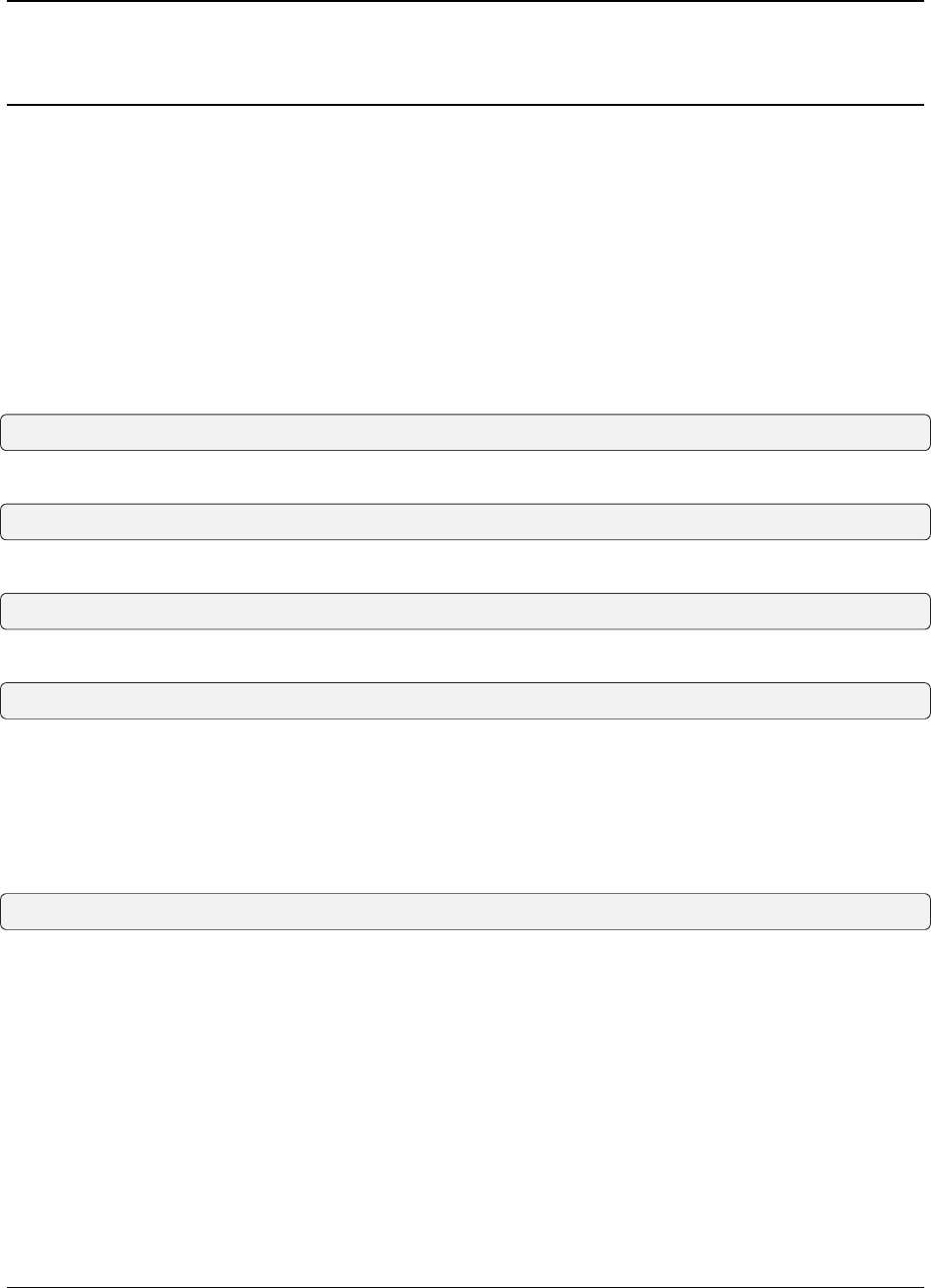
CHAPTER
SIX
INSTALLATION INSTRUCTIONS FOR PRODUCTION ENVIRONMENTS
6.1 Installation using the Python package manager pip
Make sure you have the pip Python package manager installed on your Python 3 environment, and the C library for
YAML development. On Debian/Ubuntu, the easiest way to do that is:
apt-get install python3-pip libyaml-dev
Install squad:
pip3 install squad
By default, SQUAD works with sqlite, but if Postgres is required, then specific binaries are needed:
apt-get install python3-pip libyaml-dev libpq-dev
Install squad with Postgres support:
pip3 install squad[postgres]
6.2 Message broker
In order to SQUAD processes to be able to communicate between each other, you need to install an AMQP server. We
recommend RabbitMQ:
apt-get install rabbitmq-server
By default SQUAD will look for an AMQP server running on localhost, listening to the standard port, so for a single-
server deployment you don't need to do anything else.
If you have a multi-server setup, then each server needs to be configured with the location of a central AMQP server.
See the SQUAD_CELERY_BROKER_URL in the "Further configuration" section below.
19

SQUAD Documentation, Release 1.89
6.3 Processes
SQUAD is composed of 4 different process:
• web application server
• background worker (celery worker)
• periodic task scheduler (celery beat)
• CI backend listener
To run the web interface, run as a dedicated user (i.e. don't run the application as root!):
squad
• Note: if that doesn't work, ~/.local/bin is probably missing in the $PATH environment variable.
This will make the web UI available at http://localhost:8000/. To serve the UI to external users, you will need to setup
a public-facing web server such as Apache or nginx and reverse proxy to localhost on port 8000. You can change the
address or port SQUAD listens to by passing the --bind command line option, e.g. to make it listen to port 5000 on
the local loopback interface, use:
squad --bind 127.0.0.0:5000
For production usage, you will want to tweak at least the database configuration. Keep reading for more information.
After starting SQUAD, but before acessing it, you will need a user. To create an admin user for yourself, use:
squad-admin createsuperuser
These are the command lines to run the other processes:
Process Command
worker celery -A squad worker
scheduler celery -A squad beat
listener squad-admin listen
You most probably want all the processes (including the web interface) being managed by a system manager such as
systemd, or a process manager such as supervisor.
For an example deployment, check the configuration management repository for Linaro's qa-reports (using ansible).
After having the necessary processes running, there are a few extra setup steps needed:
• Create Backend instances for your test execution backends. Go to the administration web UI, and under "CI",
choose "Backends".
• For each project, create authentication tokens and subscriptions
20 Chapter 6. Installation Instructions for production environments
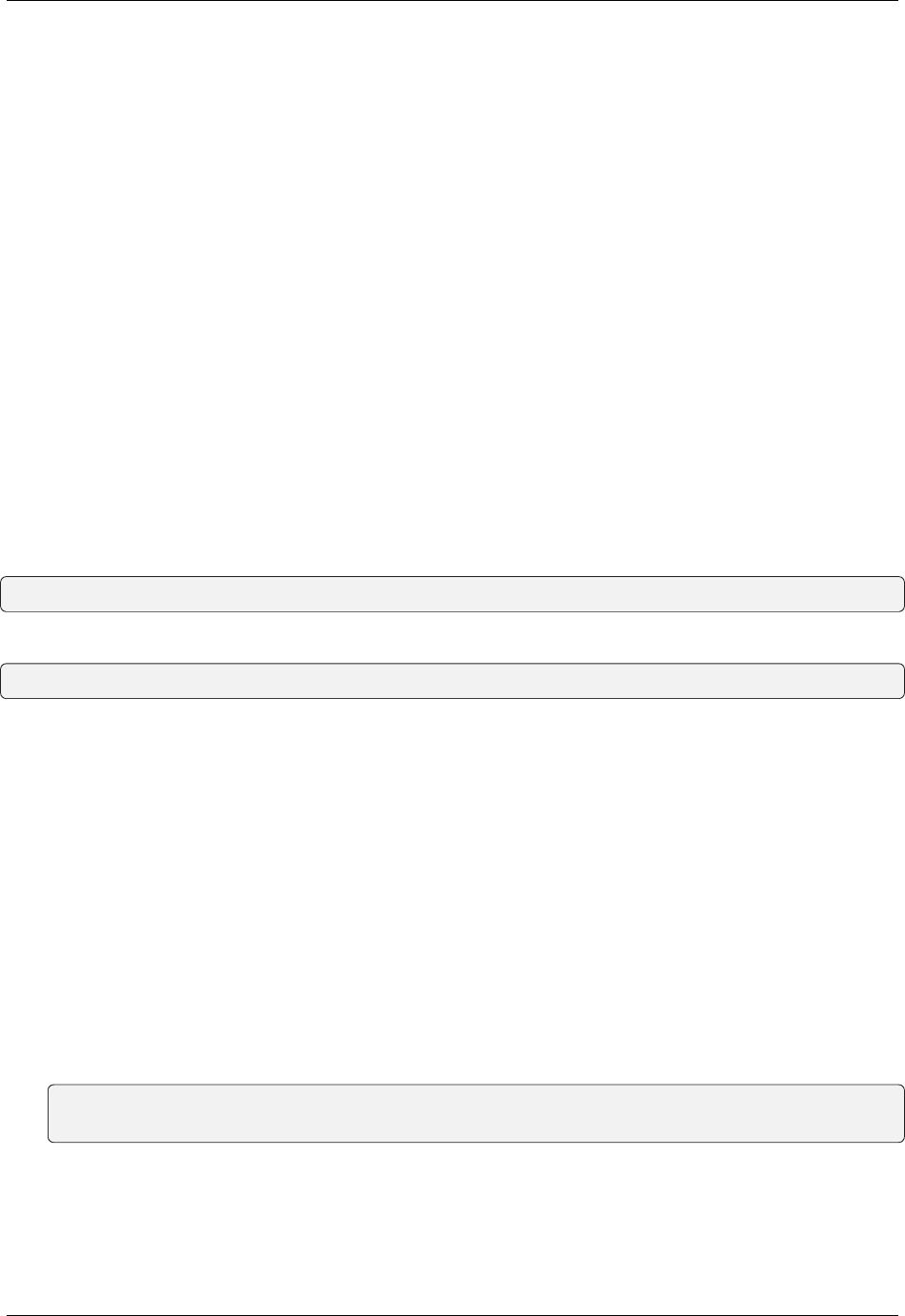
SQUAD Documentation, Release 1.89
6.4 Worker configuration
The worker process handles background tasks, such as submitting CI jobs, fetching the results fo CI jobs, preparing
reports that require intensive processing, etc. Some tasks take a lot longer than the others, e.g. submitting a CI job is
pretty quick, while fetching CI job results takes some time to fetch all the data, parse it, and store in the database.
To allow for better load balancing, these tasks are split into multiple queues:
• ci_fetch
• ci_poll
• ci_quick
• core_notification
• core_postprocess
• core_quick
• core_reporting
ci_fetch and ci_poll can be potentially slow, and if there is a large influx of those types of tasks, your system may display
some congestion because all available worker threads are occupied running slow tasks, while several of the quick ones
are waiting their turn.
To avoid this, you might want to start a small part of your workers so that they will not pick up any of those slow tasks:
squad worker --exclude-queues ci_fetch,ci_poll
Or you can also give an explicit task list, which is less flexible but might be useful:
squad worker --queues core_quick,ci_quick
By default, workers listen to all queues.
For message brokers that support prefixed-queue names, SQUAD has the optional environment variable
SQUAD_CELERY_QUEUE_NAME_PREFIX, that, if set, will prepend it before all queue names. SQUAD also support
adding a suffix via the optional environment variable SQUAD_CELERY_QUEUE_NAME_SUFFIX
6.5 Further configuration
The following environment variables affect the behavior of SQUAD:
• DATABASE: controls the database connection parameters. Should contain KEY=VALUE pairs, separated by colons
(:).
By default, SQUAD will use a SQLite3 database in its internal data directory.
For example, to use a PostgreSQL database (requires the psycopg2 Python package to be installed):
DATABASE=ENGINE=django.db.backends.postgresql_
˓→psycopg2:NAME=mydatabase:USER=myuser:HOST=myserver:PASSWORD=mypassword
• SQUAD_EXTRA_SETTINGS: path to a Python file with extra Django settings.
• SQUAD_SITE_NAME: name to be displayed at the page title and navigation bar. Defaults to 'SQUAD'.
• XDG_DATA_HOME: parent directory of the SQUAD internal data directory. Defaults to ~/.local/share. The
actual data directory will be ${XDG_DATA_HOME}/squad.
6.4. Worker configuration 21

SQUAD Documentation, Release 1.89
• SECRET_KEY_FILE: file to store encryption key for user sessions. Defaults to ${XDG_DATA_HOME}/squad/
secret.dat
• DJANGO_LOG_LEVEL: the logging level used for Django-related logging. Default: INFO.
• SQUAD_LOG_LEVEL: the logging level for SQUAD-specific logging. Default: INFO.
• SQUAD_HOSTNAME: hostname used to compose links in asynchronous notifications (e.g. emails). Defaults to the
FQDN of the host where SQUAD is running.
• SQUAD_BASE_URL: Base URL to the SQUAD web interface, used when composing links in notifications (e.g.
emails). Defaults to https://$SQUAD_HOSTNAME.
• SQUAD_EMAIL_FROM: e-mail used as sender of email notifications. Defaults to noreply@$SQUAD_HOSTNAME.
• SQUAD_EMAIL_HOST: hostname to use as e-mail delivery host. Sets Django's EMAIL_HOST setting. See the
Django documentation on sending email for more details.
• SQUAD_LOGIN_MESSAGE: a message to be displayed to users right above the login form. Use for example to
provide instructions on what credentials to use. Defaults no message.
• SQUAD_ADMINS: Comma-separated list of administrator email addresses, for use in exception notifications. Each
• SQUAD_SEND_ADMIN_ERROR_EMAIL: Determines whether or not to send exception notifications to administra-
tors. Defaults to True.
• SENTRY_DSN: Defines Sentry's DSN token, if defined SQUAD will attempt to import Sentry SDK and use it.
Defaults to None. If Sentry is configured it's recommended to disable sending admin notifications by setting
SQUAD_SEND_ADMIN_ERROR_EMAIL = False.
• SQUAD_STATIC_DIR: Directory where SQUAD will find it's preprocessed static assets. This usually does not
need to be set manually, and exists mostly for use in the Docker image.
• SQUAD_CELERY_BROKER_URL: URL to the broker to be used by Celery for background jobs. Defaults to amqp:/
/localhost:5672.
• SQUAD_CELERY_QUEUE_NAME_PREFIX: Name to prefix all queues in Celery. Useful when multiple environments
share the same broker. Defaults to ''.
• SQUAD_CELERY_QUEUE_NAME_SUFFIX: Name to concatenate all queues in Celery. Useful when a queue exten-
sion is needed by the broker. Defaults to ''.
• SQUAD_CELERY_POLL_INTERVAL: Number of seconds a worker will sleep after an empty answer from SQS
before the next polling attempt. Defaults to 1.
6.6 User management
SQUAD provides 'users' management command that allows to list, add, update and display details about users. This
command comes handy when trying to automate SQUAD setup with containers. Details about user management with
'users' command:
• list Displays list of all available users with their names (first, last) from database
• details <username> Displays details about requested username. Details include:
– username
– is_active
– is_staff
– is_superuser
22 Chapter 6. Installation Instructions for production environments

SQUAD Documentation, Release 1.89
– groups
• add <username> Adds new user with given 'username'. It also takes additional parameters
– --email EMAIL email of the user
– --passwd PASSWD Password for this user. If empty, a random password is generated.
– --staff Make this user a staff member
– --superuser Make this user a super user
• update <username> Updates database record of existing user identified with 'username'. It takes additional pa-
rameters
– --email EMAIL Change email of the user
– --active Make this user active
– --not-active Make this user inactive
– --staff Make this user a staff member
– --not-staff Make this user no longer a staff member
– --superuser Make this user a superuser
– --not-superuser Make this user no longer a superuser
6.7 Docker compose setup
Alternatively, SQUAD can be run inside a Docker container using Docker Compose. A baseline setup is provided here.
Not only will this run all SQUAD processes, but also automatically pull and start all required services to run a local
SQUAD instance with a web interface. All container images are pulled automatically from Dockerhub.
Please be aware, that some of the predefined settings, like SQUAD_BASE_URL or SQUAD_EMAIL_FROM in
docker-compose.yml and squad-apache.conf will need to be changed. To use this setup, copy all of the pro-
vided files locally and run the docker using:
docker compose up -d
After that, the logs and status of the container can be checked resp. using:
docker compose logs
and:
docker stats
If everything has started successfully, the frontend should be reachable under http://localhost:10080.
Before being able to actually use the frontend of SQUAD, a user that acts as an administrator (with superuser rights)
needs to be created. This can be done by entering the container with:
docker compose exec squad-frontend /bin/bash
While being in the container, a new administrator account can be created with the following command:
squad-admin createsuperuser
6.7. Docker compose setup 23

SQUAD Documentation, Release 1.89
After this command, enter the required data and exit the container environment by issuing exit.
Now, you should be able to login on the frontend web interface, using the credentials you just entered while creating
the administrator account.
To stop the SQUAD instance, issue the following command to stop the container:
docker compose down
6.7.1 Database dump and restore
Note that container must be running for the following commands to work.
To dump the database to the file db-dumped, issue the following command:
docker compose exec -t postgres pg_dump -F custom -U postgres -f /db-dumped squad
To restore the database from the file db-to-be-restored, issue the following command:
docker compose exec -t postgres pg_restore -U postgres -c -d squad -j4 /db-to-be-restored
24 Chapter 6. Installation Instructions for production environments

CHAPTER
SEVEN
CI: CONTINOUS INTEGRATION SUPPORT
7.1 CI module in SQUAD
This subsystem has the following features:
• receiving test job requests
• submitting test job requests to test execution backends
• pulling test job results from test execution backends
The data model for the CI subsystem looks like this:
+---------+ +---------+ +------------------------+
| TestJob |--->| Backend |--->| Backend implementation |
+---------+ +---------+ +------------------------+
|
| +---------------------+
+-------->| TestRun (from core) |
+---------------------+
TestJob holds the data related to a test job request. This test job is going to be submitted to a Backend, and after SQUAD
gets results back from that backend, it will create a TestRun object with the results data. A Backend is a representation
of a given test execution system, such as a LAVA server, or Jenkins. Backend contains the necessary data to access
the backend, such as URL, username and password, etc, while Backend implementation encapsulates the details
on how to interact with that type of system (e.g. API calls, etc). So for example you can have multiple backends of the
same type (e.g. different 2 LAVA servers).
For the CI loop integration to work, you need to run a few extra processes beyond the web interface. See Installation
Instructions for production environments for details.
7.2 Submitting test job requests
The API is the following
POST /api/submitjob/:group/:project/:build/:environment
• group, project, build and environment are used to identify which project/build/environment will be used
to record the results of the test job.
• The following data must be submitted as POST parameters:
– backend: name of a registered backend, to which this test job will be submitted.
25
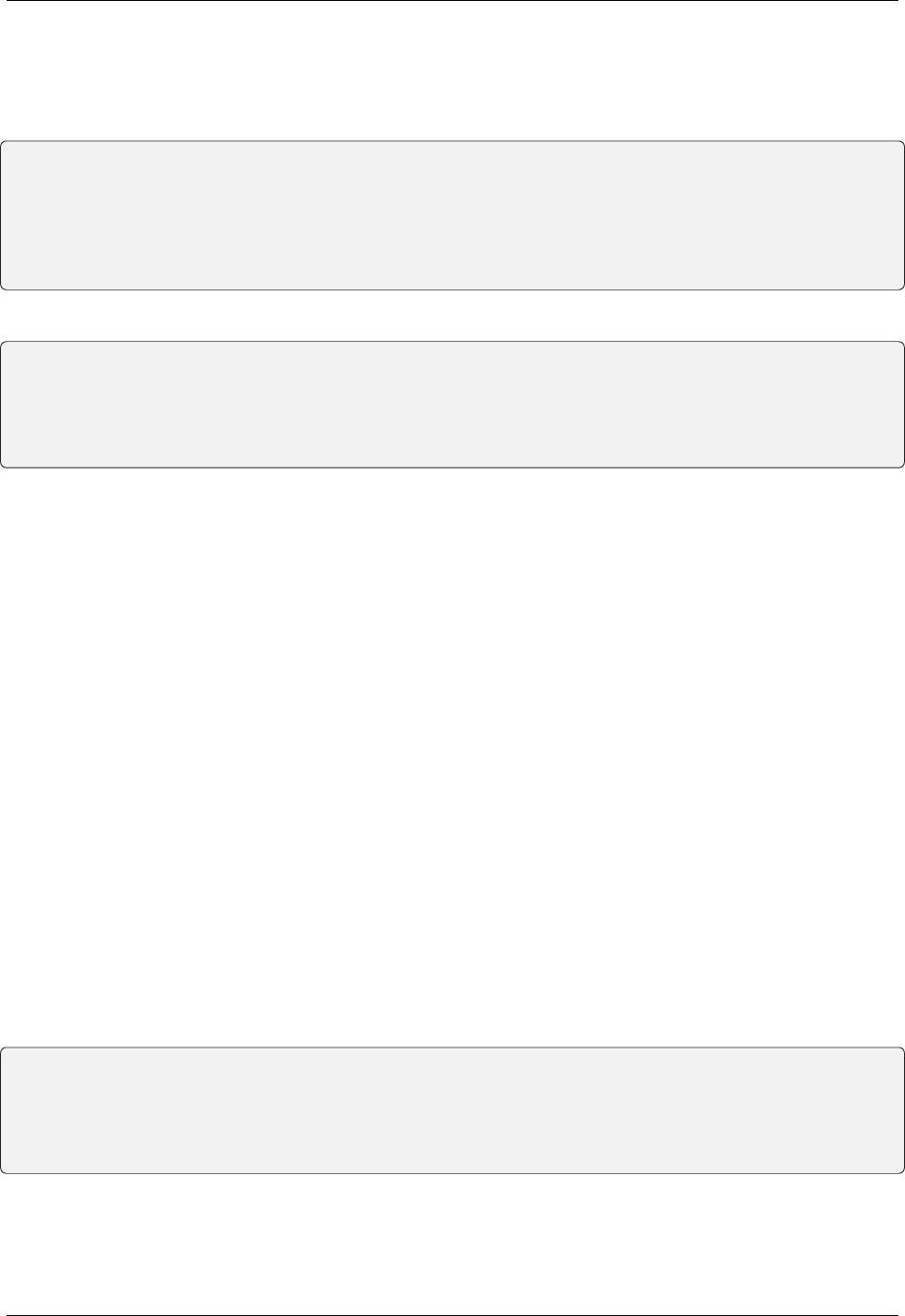
SQUAD Documentation, Release 1.89
– definition: test job definition. The contents and format are backend-specific. If it is more convenient,
the definition can also be submitted as a file upload instead of as a POST parameter.
Example (with test job definition as POST parameter):
$ DEFINITION="$(cat /path/to/definition.txt)"
$ curl \
--header "Authorization: token $SQUAD_TOKEN" \
--form backend=lava \
--form definition="$DEFINITION" \
https://squad.example.com/api/submitjob/my-group/my-project/x.y.z/my-ci-env
Example (with test job definition as file upload):
$ curl \
--header "Authorization: token $SQUAD_TOKEN" \
--form backend=lava \
--form definition=@/path/to/definition.txt \
https://squad.example.com/api/submitjob/my-group/my-project/x.y.z/my-ci-env
Submitted jobs on finished builds do not cause events (email/patchsource/callback notifications) to be triggered when
the job is fetched. But there's an option named CI_RESET_BUILD_EVENTS_ON_JOB_RESUBMISSION that tells
SQUAD to reset all build events on job submission so that they can be triggered once more next time the build reaches
its "finished" state.
The user owning the SQUAD_TOKEN should be a member of the group and should have the "Staff Status" permission.
7.3 Submitting test job watch requests
Test job watch request are similar to test job requests. The only difference is that some other service submitted the test
job for execution and SQUAD is requested to track the progress. By default, SQUAD will schedule the job for fetching
right away. If the variable ?delay_fetch is present, SQUAD will wait until the test job is finished before retrieving the
results and do post processing. The API is following:
POST /api/watchjob/:group/:project/:build/:environment
• group, project, build and environment are used to identify which project/build/environment will be used
to record the results of the test job.
• The following data must be submitted as POST parameters:
– backend: name of a registered backend, to which this test job was be submitted.
– testjob_id: test job ID. The contents and format are backend-specific.
Example (with test job definition as POST parameter):
$ curl \
--header "Authorization: token $SQUAD_TOKEN" \
--form backend=lava \
--form testjob_id=123456 \
https://squad.example.com/api/watchjob/my-group/my-project/x.y.z/my-ci-env
26 Chapter 7. CI: continous integration support

SQUAD Documentation, Release 1.89
7.4 Backend settings
Backends support internal settings that are stored in the database. It is assumed that settings are a valid YAML markup.
7.5 Supported backends
Out of the box SQUAD supports following backends:
• LAVA
• TuxSuite
7.5.1 LAVA
SQUAD supports only LAVA v2. Old version of LAVA was made obsolete with 2017.11 LAVA release.
LAVA backend supports the following settings:
• CI_LAVA_INFRA_ERROR_MESSAGES a list of strings that cause automated job resubmission when
matched in the LAVA error message
• CI_LAVA_SEND_ADMIN_EMAIL boolean flag that prevents sending admin emails for each resubmitted
job when set to False
• CI_LAVA_HANDLE_SUITE boolean flag that parses results from LAVA test suite when set to True.
Please note that this option can be overwritten by having the same option with different value in Project
project_settings
• CI_LAVA_CLONE_MEASUREMENTS boolean flag that allows to save LAVA result as both Test and
Measurement when set to True. Default is False. Can be overwritten for each project separately (similar
to CI_LAVA_HANDLE_SUITE).
• CI_LAVA_HANDLE_BOOT boolean flag that parses LAVA auto-login-action as a boot test when
set to True. Default is False. Can be overwritten for each project separately (similar to
CI_LAVA_HANDLE_SUITE). NOTE: Before SQUAD 1.x series, the default behavior was to always pro-
cess auto-login-action as boot. After 1.x, the default behavior has changed to do the opposite.
• CI_LAVA_WORK_AROUND_INFRA_ERRORS boolean flag that allows to accept test results from 'In-
complete' jobs if the failure was caused by infrastracture. NOTE: Use with caution!
• CI_LAVA_JOB_ERROR_STATUS string that coincides with the LAVA job health. Used when sending
email notifications for the ON_ERROR notification strategy
Example LAVA backend settings:
CI_LAVA_INFRA_ERROR_MESSAGES:
- 'Connection closed'
- 'lava_test_shell connection dropped.'
- 'fastboot-flash-action timed out'
- 'u-boot-interrupt timed out'
- 'enter-vexpress-mcc timed out'
- 'Unable to fetch git repository'
CI_LAVA_SEND_ADMIN_EMAIL: False
CI_LAVA_HANDLE_SUITE: True
7.4. Backend settings 27

SQUAD Documentation, Release 1.89
7.5.2 TuxSuite
SQUAD supports only LAVA v2. Old version of LAVA was made obsolete with 2017.11 LAVA release.
LAVA backend supports the following settings:
• TEST_METADATA_KEYS a list of strings to extract metadata info from test results
• BUILD_METADATA_KEYS a list of strings to extract metadata info from build results
Example TuxSuite backend settings:
BUILD_METADATA_KEYS:
- 'build_status'
- 'download_url'
- 'git_describe'
- 'git_ref'
- 'git_repo'
- 'git_sha'
- 'git_short_log'
- 'kernel_version'
- 'kconfig'
- 'target_arch'
- 'toolchain'
Multinode
SQUAD supports fetching results from LAVA multinode jobs. There are however a few limitations with this setup:
• All results from multinode will share environment name Since test jobs are submitted via SQUAD using the
environment from submit URL there is no way for SQUAD to distinguish between different environmens on
different parts of multinode job.
• Resubmit will repeat the whole set In SQUAD all parts of multinode job will share the multinode definition. For
this reason re-submitting any part of the multinode job will result in new multinode job that includes all parts.
• Each part of the multinode job will be retrieved separately This means that each part will create a TestRun in
SQUAD. This should not be a major issue as all results will still be available. Users need to make sure that the
test names don't overlap as SQUAD will not have any means of distinguishing between identically named tests
from different parts of multinode job.
7.6 Callbacks Triggers
In SQUAD, callbacks can be attached to Builds. They are triggered once the given build finishes fetching all test jobs
from the backend.
There's currently two ways of attaching a callback to a build:
• POST /api/createbuild/<group_slug>/<project_slug>/<build_version> (when creating a build)
• POST /api/build/<build_id>/callbacks/ (attach to an existing build)
And the following parameters are accepted for both endpoints:
$ curl -X POST /api/build/<build_id>/callbacks/ \
-F "callback_url=https://your-callback-url.com"
28 Chapter 7. CI: continous integration support
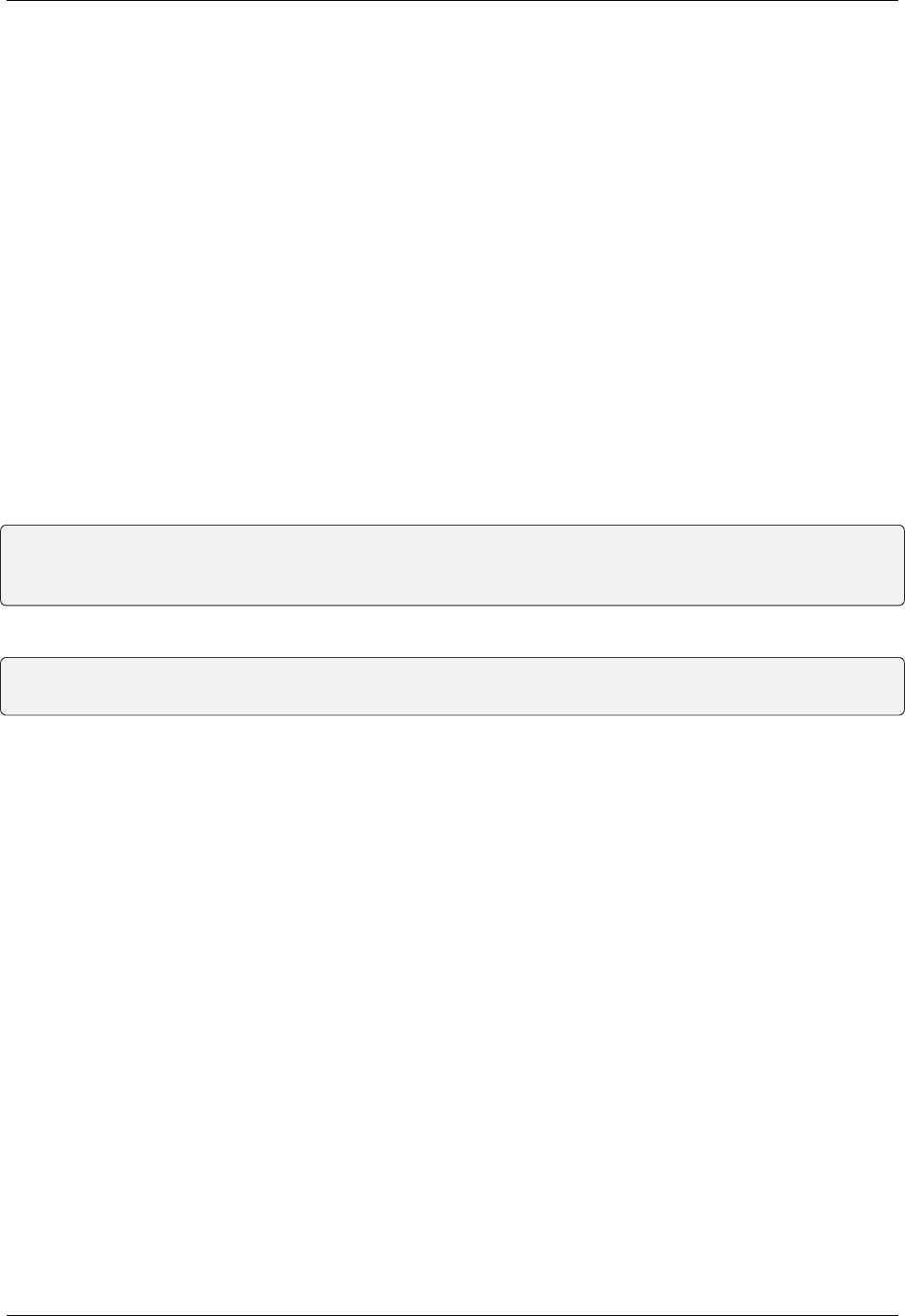
SQUAD Documentation, Release 1.89
The following attributes are optional:
• callback_method - string post or get defining the callback request method. Defaults to post
• callback_event - string on_build_finished defining at which point the callback should be dispatched. Defaults
to on_build_finished
• callback_headers - JSON-formatted string defining the callback headers, useful to define auth tokens
• callback_payload - JSON-formatted string defining the callback payload
• callback_payload_is_json - string with true or false indicating whether the payload should be sent as JSON
or as form-data. Defaults to true
• callback_record_response - string with true or false indicating whether or not the callback response should
be recorded in SQUAD
7.6.1 Authentication
Callbacks usually require some sort of authentication. In SQUAD this can be accomplished in two forms:
• via callback_headers, where a JSON-formatted string is expected and will be used in the callback headers
when it triggers. Ex:
$ curl -X POST /api/build/<build_id>/callbacks/ \
-F "callback_url=https://your-callback-url.com" \
-F "callback_headers='{\"Auth-Token\": \"your-really-safe-token\"}'"
• via project settings /<group_slug>/<project_slug>/settings/advanced/ (YAML-formatted):
CALLBACK_HEADERS:
Auth-Token: your-really-safe-token
7.6.2 Notes
It's important to point out that:
• Multiple callbacks are allowed for a build, given that they point to different urls
• Attaching the same callback twice to the same build results in noop
• The callback headers will be merged with the build's project settings if available. If header names collide, project
settings will get overwritten
• Callbacks are available in read-only mode at GET /api/builds/<id>/callbacks/
7.7 Receiving Callbacks
SQUAD also supports receiving callbacks. Currently the use case for receiving callbacks is for backends that need to
push results back to SQUAD while not having a live connection like LAVA does with ZMQ or websockets. Tuxsuite
is a good example as it runs on a serverless architecture it doesn't provide live connections, thus needing the callback
feature.
The callback URL should be in format:
• POST /api/fetchjob/<group_slug>/<project_slug>/<build_version>/<environment-slug>/<backend-name>
7.7. Receiving Callbacks 29

SQUAD Documentation, Release 1.89
Authetication and payloads are dependant on the backend implementation. There is currently only one supported
backend: Tuxsuite. In the section below we will describe how this integration should work.
7.7.1 Use case: Tuxsuite
SQUAD allows callbacks to be triggered by Tuxsuite. Developers trigger builds and tests to Tuxsuite as they would
normally do. The difference now is that they can pass a URL to be POST'ed after such build or test is finished. Below
is an example of how to do that:
$ tuxsuite build \
--git-repo https://github.com/torvalds/linux.git \
--git-ref master \
--target-arch arm \
--toolchain gcc-12 \
--kconfig tinyconfig \
--callback https://squad.com/api/fetchjob/tuxgroup/tuxproject/mybuild/myenv/tuxsuite
This tells Tuxsuite to POST to https://squad.com/api/fetchjob/tuxgroup/tuxproject/mybuild/myenv/tuxsuite. Payload
and authentication are Tuxsuite-specific and documentation can be found at https://docs.tuxsuite.com/callbacks/.
In order to validate that the request is coming from Tuxsuite, SQUAD checks the x-tux-payload-signature header and
match it with public key configured in each project setting page.
SQUAD will attempt to read key from TUXSUITE_PUBLIC_KEY variable defined in the project settings of tux-
group/tuxproject. If the request is valid, SQUAD will take in the payload provided by Tuxsuite, save it and enqueue a
test job for fetching.
The main difference now is that Tuxsuite will be the one telling SQUAD when to fetch results. This prevents SQUAD
from polling Tuxsuite every now and then.
30 Chapter 7. CI: continous integration support

CHAPTER
EIGHT
API: INTERACTING WITH BACKEND
8.1 Available APIs
SQUAD has a set of APIs that allow to interact with it's backend. There are two main parts of the API
• Native API This is meant to provide main features of SQUAD (submitting results, submitting CI test jobs)
• REST API Provides access to almost all properties of core data model objects. Also provides additional features
that can be used to build alternative frontends or automated tools.
8.2 Native APIs
8.2.1 data
GET /api/data/<group_slug>/<project_slug>/
Retrieves metrics data in JSON format. The following parameters are mandatory:
• metric: which metric to retrieve. You have to use the full metric name, i.e. <suite_slug>/<metric_slug>.
This parameter can be specified multiple times, so data from multiple metrics can be fetched with a single request.
• environment: environment for which metric data is to be retrieved.
This parameter can be specified multiple times, so data from multiple environments can be fetched with a single
request.
• format: format of response. Valid values are json and csv. If this parameter is ommited, json is used as a default.
The JSON response is an object, which metrics as keys. Values are also objects, which environments as keys, and the
data series as values. Each data point is an array with 3 values: the build date timestamp (as the number of seconds
since the epoch), the value of the metric, and the build identifier.
Example:
{
"mysuite/mymetric": {
"environment1": [
[1537210872, 1.15, "v0.50.1-21-g7b96236"],
[1537290845, 1.14, "v0.50.1-22-g1097312"],
[1537370812, 1.13, "v0.50.1-23-g0127321"],
[1537420892, 1.15, "v0.50.1-24-g8262524"],
[1537500801, 1.13, "v0.50.1-25-gfa72526"],
// [...]
(continues on next page)
31

SQUAD Documentation, Release 1.89
(continued from previous page)
],
"environment2": [
[1537210872, 1.25, "v0.50.1-21-g7b96236"],
[1537290845, 1.24, "v0.50.1-22-g1097312"],
[1537370812, 1.23, "v0.50.1-23-g0127321"],
[1537420892, 1.25, "v0.50.1-24-g8262524"],
[1537500801, 1.23, "v0.50.1-25-gfa72526"],
// ...
]
},
"mysuite/anothermetric": {
// [...]
}
}
The CSV response contains one line for each data point. The columns are: metric, environment, timestamp, value,
build identifier. Assuming the same data as the JSON example above, the CSV would look like this:
"mysuite/mymetric","environment1","1537210872","1.15","v0.50.1-21-g7b96236"
"mysuite/mymetric","environment1","1537290845","1.14","v0.50.1-22-g1097312"
"mysuite/mymetric","environment1","1537370812","1.13","v0.50.1-23-g0127321"
"mysuite/mymetric","environment1","1537420892","1.15","v0.50.1-24-g8262524"
"mysuite/mymetric","environment1","1537500801","1.13","v0.50.1-25-gfa72526"
[...]
"mysuite/mymetric","environment2","1537210872","1.25","v0.50.1-21-g7b96236"
"mysuite/mymetric","environment2","1537290845","1.24","v0.50.1-22-g1097312"
"mysuite/mymetric","environment2","1537370812","1.23","v0.50.1-23-g0127321"
"mysuite/mymetric","environment2","1537420892","1.25","v0.50.1-24-g8262524"
"mysuite/mymetric","environment2","1537500801","1.23","v0.50.1-25-gfa72526"
[...]
"mysuite/anothermetric",[...]
[...]
8.2.2 createbuild
POST /api/createbuild/<group_slug>/<project_slug>/<version_string>
Creates Build object. Following parameters are accepted:
• patch_source - string matching PatchSource.name
• patch_baseline - version string matching Build.version
• patch_id - string identifying the patched version (for example git commit ID)
• callback_url - url string to define a callback for the build
• callback_method - string "post" or "get" defining the callback request method. Defaults to "post"
• callback_event - string "on_build_finished" defining at which point the callback should be dispatched. Defaults
to "on_build_finished"
• callback_headers - JSON-formatted string defining the callback headers, useful to define auth tokens
• callback_payload - JSON-formatted string defining the callback payload
32 Chapter 8. API: Interacting with backend

SQUAD Documentation, Release 1.89
• callback_payload_is_json - string with "true" or "false" indicating whether the payload should be sent as JSON
or as form-data. Defaults to "true"
• callback_record_response - string with "true" or "false" indicating whether or not the callback response should
be recorded in SQUAD
8.2.3 submit
Submitting results.
8.2.4 submitjob
Submitting test job requests.
8.2.5 watchjob
Submitting test job watch requests.
8.2.6 resubmit
POST /api/resubmit/<job_id>
This API is only available to superusers at the moment. It allows to resubmit CI test jobs using Backend's implemen-
tation.
By default, the original test job object's results are kept in, but there's a project setting named
CI_DELETE_RESULTS_RESUBMITTED_JOBS that tells SQUAD to remove all results from the resubmitted
job.
Resubmitted jobs on finished builds do not cause events (email/patchsource/callback notifications) to be triggered when
the job is fetched. But there's an option named CI_RESET_BUILD_EVENTS_ON_JOB_RESUBMISSION that tells
SQUAD to reset all build events on job resubmission so that they can be triggered once more next time the build
reaches its "finished" state.
8.2.7 forceresubmit
POST /api/forceresubmit/<job_id>
This API is only available to superusers at the moment. It allows to resubmit CI test jobs using Backend's implemen-
tation. Works similarly to 'resubmit' but doesn't respect 'can_resubmit' flag on the TestJob object.
8.3 REST APIs
The REST API is powered by `Django Rest Framework (DRF)<https://www.django-rest-framework.org/>`_ and
Django fields lookups. This means that for supported endpoints you can do a field lookup. For example, querying all
testruns that belong to a build that belongs to a project called MyProject, one would run a query like:
GET /api/testruns/?build__project__name=MyProject
This gives the API flexibility for filtering in many different ways.
8.3. REST APIs 33

SQUAD Documentation, Release 1.89
8.3.1 groups (/api/groups/)
Provides access to Group object. This object corresponds to SQUAD Group (not to be confused with Django group).
The Group objects can be filtered and searched. Both operations can be done using 'name' and 'slug' fields.
With enough privileges Groups can also be created, modified and deleted using REST API with POST, PUT and
DELETE HTTP requests respectively
8.3.2 projects (/api/projects/)
Provides access to Project object. In case of private projects token with enough privileges is required to access the
object. Project API endpoint has following additional routes:
• builds (/api/projects/<id>/builds/)
Provides list of builds associated with this project. List is paginated
• test_results (/api/projects/<id>/test_results/)
Provides list of latest results for given test for all environments. 'test_name' is a mandatory GET parameter for
this call. List is paginated. It is advised to limit the search results to 10 to avoid poor performance. This can be
achieved using 'limit=10' GET parameter
• subscribe (/api/projects/<id>/subscribe/)
Provides means to subscribe either email address or user to the project notifications in automated way. This
endpoint expects POST request with single field "email"
• unsubscribe (/api/projects/<id>/unsubscribe/)
Provides means to unsubscribe either email address or user from the project notifications in automated way. This
endpoint expects POST request with single field "email"
With enough privileges Projects can also be created, modified and deleted using REST API with POST, PUT and
DELETE HTTP requests respectively
8.3.3 builds (/api/builds/)
Provides access to Build object. In case of private projects token with enough privileges is required to access the object.
Build API endpoint has following additional routes:
• metadata (/api/builds/<id>/metadata/)
Provides list of all metadata key-value pairs associated with this object
• status (/api/builds/<id>/status/)
Provides access to ProjectStatus object associated with this object
• testruns (/api/builds/<id>/testruns)
Provides list of TestRun objects associated with this object
• testjobs (/api/builds/<id>/testjobs/)
Provides list of TestJob objects associated with this object
• email (/api/builds/<id>/email/)
Provides contents of email notification that would be generated for this object. Content is generated using either
EmailTemplate associated with the Project or a custom one. The EmailTemplate has to be defined in SQUAD
database before API is called. The route takes the following GET parameters:
34 Chapter 8. API: Interacting with backend

SQUAD Documentation, Release 1.89
– output - mime type to be generated. Defaults to "text/plain". Can also be set to "text/html". Using HTML
requires HTML part of the EmailTemplate to be defined
– template - ID of the EmailTemplate to be used
– baseline - ID of the Build object to be used as comparison baseline. The default is "previous finished" build
in the same project.
– force - if set to true invalidates cached object. Default is false
• report (/api/build/<id>/report/)
This API accepts both GET and POST requests.
Provides non blocking version of 'email' API. Both calls will produce DelayedReport objects which cache the
results of the call. Non blocking version ('report') is recommended as it is executed in separate process on the
worker node and doesn't affect web frontend performance or memory consumption. Reports might be resource
hungry and long running which causes webserver requests to time out. Non blocking call returns immediately
returning url to the cached resource. Final results can be retrieved by:
– email notification
– callback notification
– polling the result URL - Results are completed when 'status_code' field is filled in (not None/Null)
'report' API has following options:
– output - mime type to be generated. Defaults to "text/plain". Can also be set to "text/html". Using HTML
requires HTML part of the EmailTemplate to be defined
– template - ID of the EmailTemplate to be used
– baseline - ID of the Build object to be used as comparison baseline. The default is "previous finished" build
in the same project.
– email_recipient - email address which is notified when report is ready
– callback - URL which SQUAD calls when report is ready. Call is made using POST request type. Call can
be secured with token
– callback_token - token/password for securing callback. When "callback" option is present it adds "Autho-
rization" and "Auth-Token" headers to the HTTP POST call. It is recommended to send this option usig
POST request to avoid password leakage.
– keep - number of days to keep the cached reports in the database
– force - if set to true invalidates cached object. Default is false
• callbacks (/api/builds/<id>/callbacks/)
This API accepts both GET and POST requests. On GET requests, a list of callbacks is retrieved. A POST
request will create a callback and attach to this build. The following parameters are accepted:
– callback_url - url string to define a callback for the build (the only mandatory field)
– callback_method - string "post" or "get" defining the callback request method. Defaults to "post"
– callback_event - string "on_build_finished" defining at which point the callback should be dispatched. De-
faults to "on_build_finished"
– callback_headers - JSON-formatted string defining the callback headers, useful to define auth tokens
– callback_payload - JSON-formatted string defining the callback payload
– callback_payload_is_json - string with "true" or "false" indicating whether the payload should be sent as
JSON or as form-data. Defaults to "true"
8.3. REST APIs 35

SQUAD Documentation, Release 1.89
– callback_record_response - string with "true" or "false" indicating whether or not the callback response
should be recorded in SQUAD
With enough privileges Builds can also be created, modified and deleted using REST API with POST, PUT and
DELETE HTTP requests respectively. This is however not recommended.
8.3.4 testjobs (/api/testjobs/)
Provides access to TestJob object. In case of private projects token with enough privileges is required to access the
object. Build API endpoint has following additional routes:
• definition
Returns plain text version of the TestJob.definition field. This is pretty specific to LAVA but doesn't exclude any
other automated execution tools.
8.3.5 testruns (/api/testruns/)
Provides access to TestRun object. In case of private projects token with enough privileges is required to access the
object. Build API endpoint has following additional routes:
• tests_file (/api/testruns/<id>/tests_file/)
• metrics_file (/api/testruns/<id>/metrics_file/)
• metadata_file (/api/testruns/<id>/metadata_file/)
• log_file (/api/testruns/<id>/log_file/)
• tests (/api/testruns/<id>/tests/)
• metrics (/api/testruns/<id>/metrics/)
• status (/api/testruns/<id>/status/)
Provides a list of TestRun's statuses. One can also passing in filters to get specific results, e.g.
/api/testruns/<id>/status/?suite__isnull=true retrieves the overall Status object for that testrun.
8.3.6 tests (/api/tests/)
Provides access to Tests objects. In case of private projects token with enough privileges is required to access the
objects.
8.3.7 metrics (/api/metrics/)
Provides access to Metrics objects. In case of private projects token with enough privileges is required to access the
objects.
36 Chapter 8. API: Interacting with backend

SQUAD Documentation, Release 1.89
8.3.8 suites (/api/suites/)
Provides access to Suite object. In case of private projects token with enough privileges is required to access the object.
8.3.9 environments (/api/environments/)
Provides access to Environment object. In case of private projects token with enough privileges is required to access
the object.
8.3.10 backends (/api/backends/)
Provides access to Backend object.
With enough privileges Backend can also be created, modified and deleted using REST API with POST, PUT and
DELETE HTTP requests respectively
8.3.11 emailtemplates (/api/emailtemplates/)
Provides access to EmailTemplate object.
With enough privileges EmailTemplate can also be created, modified and deleted using REST API with POST, PUT
and DELETE HTTP requests respectively
8.3.12 knownissues (/api/knownissues/)
Provides access to KnownIssue object.
With enough privileges KnownIssue can also be created, modified and deleted using REST API with POST, PUT and
DELETE HTTP requests respectively
8.3.13 patchsources (/api/patchsources/)
Provides access to PatchSource object.
8.3.14 annotations (/api/annotations/)
Provides access to Annotation object.
With enough privileges Annotation can also be created, modified and deleted using REST API with POST, PUT and
DELETE HTTP requests respectively
8.3. REST APIs 37

SQUAD Documentation, Release 1.89
8.3.15 metricthresholds (/api/metricthresholds/)
Provides access to MetricThreshold object.
With enough privileges MetricThreshold can also be created, modified and deleted using REST API with POST, PUT
and DELETE HTTP requests respectively
8.3.16 reports (/api/reports/)
Provides access to results of /api/build/<id>/email and /api/build/<id>/report results. Both of these endpoints create
DelayedReport objects and present them to the user. The difference is that 'email' API is blocking and 'report' is not
blocking (returns immediately).
status_code field in the reports endpoint will indicate whether the report is ready. If the field is empty, the report
wasn't prepared yet. status_code follows the HTTP status codes. Anything else that 200 in status_code field suggests a
problem. error_message field can be checked to learn about issue details.
8.4 REST API Schema (for CLI)
SQUAD's API supports API clients. Example is coreapi. In order for client to understand the API SQUAD generates
schema file. Schema is dynamically built and it's available at /api/schema URL. Example usage with coreapi-cli:
coreapi get https://<host_tld>/api/schema
coreapi action projects list
More details about coreapi can be found on coreapi website and DRF website:
• http://www.coreapi.org/
• https://www.django-rest-framework.org/topics/api-clients/
8.5 SQUAD-Client
SQUAD team has been working on a client tool that help users query the API easily, using a Python descriptive way
of interacting with the backend.
If you are interested in using such tool, please check it out in SQUAD-Client
8.6 Badges
SQUAD offers project and build badges that can be used in the webpages
https://<squad_instance_tld>/group/project/badge
https://<squad_instance_tld>/group/project/build_version/badge
The colour of the badge matches the passed/failed condition. Following colours are presented:
• green (#5cb85c) when there are no failed results
• orange (#f0ad4e) when there are both passed and failed results
• red (#d9534f) when there are no passed results
38 Chapter 8. API: Interacting with backend

SQUAD Documentation, Release 1.89
If there are no results, the badge colour is grey (#999)
Badge offers customization through following parameters:
• title
Changes the left part of the badge to a custom text
• passrate
Changes the right part of the badge to use pass rate rather than number of tests passed, failed and skipped
• metrics
Changes the right part of the badge to use metrics instead of test results. In such case badge colour is set to green.
In case both 'metrics' and 'passrate' keywords are present, 'metrics' is ignored.
• suite/environment (only available in build badges)
Filter results by specific suite and environment.
• hide_zeros
When set to 1 or true, avoids printing status with zero as number. Exemple: without "hide_zeros" a badge might
be like "pass: 1, fail: 0, xfail: 0", whereas if enabled, it would display the badge like "pass: 1".
8.7 Google Data Studio
SQUAD has an implementation of the Google Data Studio Community Connector under https://github.com/Linaro/
squad/tree/master/scripts/community_connector/ There is also an existing deployment which will pull data from https:
//qa-reports.linaro.org/ and resides in this location (it is currently restricted to Linaro members):
https://datastudio.google.com/datasources/create?
˓→connectorId=AKfycbxnkmVPXZRad22brXQ6BIB3iG9-GPWbjZnXds0vTuU
SQUAD Connector takes three arguments, token, group and project. The token argument is not required but then the
dataset will be limited as for the non-authenticated user. After connecting it will display all the environments as metrics
in the Data Studio, and it will use date and SQUAD metrics as dimensions. User can use this data to create reports and
dashboards in the Google Data Studio as they see fit.
User is also free to deploy an instance of the Connector of their own using the code and manifest presented in the
codebase.
8.7. Google Data Studio 39

SQUAD Documentation, Release 1.89
40 Chapter 8. API: Interacting with backend

CHAPTER
NINE
USE CASE: SETUP SQUAD WITH LAVA
9.1 Introduction
Once SQUAD installation is complete, a typical use case would be integrating it with a LAVA instance. The purpose
of this use case is to describe a step-by-step set up of SQUAD with LAVA to submit and fetch jobs. If you haven't yet
set up SQUAD, take a step back and follow Installation Instructions for production environments
9.2 Setting up a LAVA instance
LAVA has its own extensive documentation on how to get a server up and running. If you don't have it already, please
refer to LAVA installation to configure yourself one. From this point it's taken that you have enough access to a running
LAVA v2 instance that jobs can be submitted to and fetched from.
Note
Make sure that your LAVA instance has event notifications enabled, as it is disabled by default.
See LAVA event notifications for details.
9.3 Creating a Backend for a LAVA instance
Log in into SQUAD admin view (/admin) and access ci > backends > add backend for inclusion form. Fill up
accordingly:
• name: name of the backend. Example: validation.linaro.org
• url: LAVA RPC2 endpoint, it's how SQUAD will communicate with LAVA. Example: https://validation.linaro.
org/RPC2
• username: a LAVA user with enough access to submit jobs
• token: a generated token for the user above, used to securely connect to the LAVA instance. See LAVA authen-
tication tokens for details
• implementation type: leave it as lava
• backend settings: used to spare specific settings for LAVA instances. For details see Backend settings
• poll interval: number of minutes to wait before fetching a job from LAVA
• max fetch attempts: max number of times SQUAD will attempt to fetch a job from LAVA
• poll enabled: if this is disabled SQUAD will not try to poll jobs from LAVA
41

SQUAD Documentation, Release 1.89
9.4 Creating a Project in SQUAD
SQUAD needs minimal data to start working with LAVA: Group and Project. By logging in the admin view, go to
core > groups > add to add a new group and core > projects > add to add a new project. These are trivial to
create, but please feel free to contact us if any help is needed.
9.5 Submitting and fetching test jobs
Given that all steps above are working correctly, you are ready to submit your first job through SQUAD. You can learn
from LAVA documentation how to write new test definitions or use existing ones. For the sake of simplicity, we'll stick
to LAVA's example of first job and use it to call SQUAD api for submitting a new test job:
wget https://validation.linaro.org/static/docs/v2/examples/test-jobs/qemu-pipeline-first-
˓→job.yaml
curl localhost:8000/api/submitjob/<group-slug>/<project-slug>/<build-version>/<env> \
--header "Authorization: token $SQUAD_TOKEN" \
--form "backend=<backend-name>" \
--form "[email protected]"
Where group-slug and project-slug are the ones created in steps above, whereas build-version and env do
not need to exist before submitting a job. For clarification buid-version is usually a git-commit hash and env is
commonly the board target that a job is running. Although it's not covered in this tutorial, creating a squad-token is
straightforward, do so by logging into admin view and go to auth token > tokens > add to add an auth token for
a user. Lastly, backend-name is the one created in the sections above.
9.6 Extra use cases
The example above showed a simplistic SQUAD instance working along with a LAVA one. More can be done by using
SQUAD's backend API to transform it into a proxy between a CI system (e.g. Jenkins) and a LAVA server. An instance
of SQUAD is currently running at https://qa-reports.linaro.org and its set up is fully automated through ansible scripts
at https://github.com/Linaro/qa-reports.linaro.org.
42 Chapter 9. Use case: setup SQUAD with LAVA

CHAPTER
TEN
INDICES AND TABLES
• genindex
• modindex
• search
43

SQUAD Documentation, Release 1.89
44 Chapter 10. Indices and tables

INDEX
A
apply_plugins() (in module squad.core.plugins), 14
E
extra_args (squad.core.plugins.Plugin attribute), 14
G
get_url() (squad.core.plugins.Plugin method), 14
H
has_subtasks() (squad.core.plugins.Plugin method),
14
N
notify_patch_build_created()
(squad.core.plugins.Plugin method), 14
notify_patch_build_finished()
(squad.core.plugins.Plugin method), 14
P
Plugin (class in squad.core.plugins), 14
postprocess_testjob() (squad.core.plugins.Plugin
method), 14
postprocess_testrun() (squad.core.plugins.Plugin
method), 14
45

